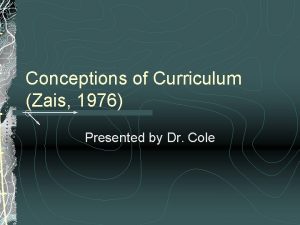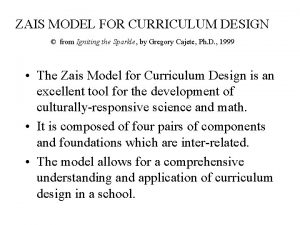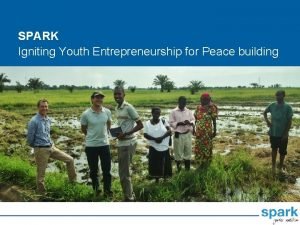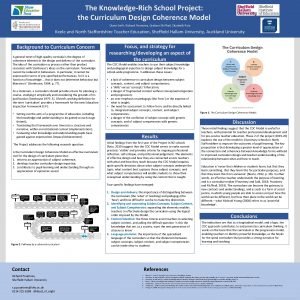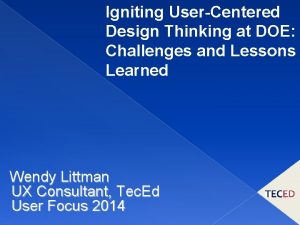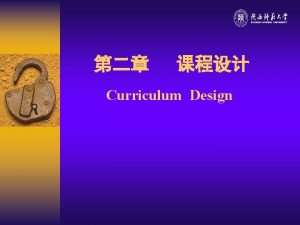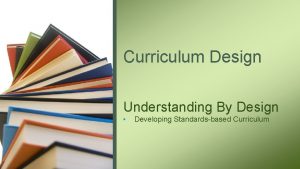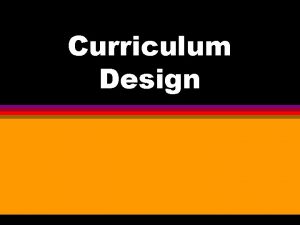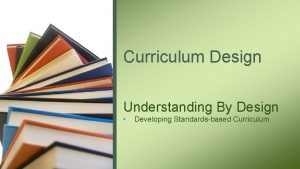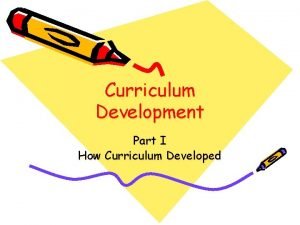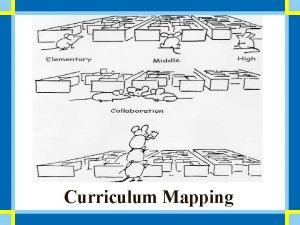ZAIS MODEL FOR CURRICULUM DESIGN from Igniting the












- Slides: 12

ZAIS MODEL FOR CURRICULUM DESIGN © from Igniting the Sparkle, by Gregory Cajete, Ph. D. , 1999 • The Zais Model for Curriculum Design is an excellent tool for the development of culturally-responsive science and math. • It is composed of four pairs of components and foundations which are inter-related. • The model allows for a comprehensive understanding and application of curriculum design in a school.

First Foundation: Epistemology • Epistemology is the “guiding” philosophy of a curriculum. It describes how a culture views knowledge. It forms a philosophical foundation for how teacher and learner may approach an educational process. • It includes kinds of “embedded” knowledge, symbols, metaphors and orientations that are cultural in nature.

First Component: Aims - Goals • Integrate cultural perspectives within the curriculum. • Reinforce, support and strengthen student skills in science and math. • Validate, affirm and build upon “funds of knowledge” that students bring with them. • Develop ties to students’ family/community.

Aims - Goals Continued • Help facilitate a sense of affective “situated -ness” of what is learned in the lives and culture of students. Empower students to take ownership for their education. Finding face, heart and foundation through what they are learning. • Address standards for science and math education in relevant and creative ways

Foundation II: Society /Culture • Who is the “audience” of the curriculum? • What are the social and cultural factors that affect the students, teachers, community and school in which the curriculum will be administered ? • Native societal/community needs and expectations … contemporary Native culture.

Component II: Content • Native Perspectives of Science and Math. • Western Science and Math Principles. • Themes and Topics based on Science and Math Scope and Sequence. • Interdisciplinary perspectives through art, social science, literature and philosophy.

Foundation III: The Learner • Native cultural personality configurations. • Field-Sensitive Learner. • Participatory, Collaborative, Experiential Learning Orientations. • Affective Learning Methodologies • Student Peer Psychology.

Component III: Learning Activity • • • Brain Patterned Methodologies. Experiential and Service Learning. Community Based Research. Multi-sensory Learning. High Context Learning.

Foundation IV: Learning Theory • • Gardner’s Multiple Intelligences. Creative Learning Theories. High / Low Context Communication. Visual Philosophy. Critical Pedagogy. Indigenous Education: An Evolving Theory Science/Math Learning Theories

Component IV: Evaluation • • • Science and Math Learning Assessment Teacher Assessment Student Assessment Administrative Assessment Community Assessment Culturally - Based Assessments

Component IV: Evaluation • • • Science and Math Learning Assessment Teacher Assessment Student Assessment Administrative Assessment Community Assessment Culturally - Based Assessments

 Zais model
Zais model The zais model
The zais model Igniting entrepreneurship in youth
Igniting entrepreneurship in youth Minimum igniting current ratio
Minimum igniting current ratio Model taba
Model taba Curriculum design coherence model
Curriculum design coherence model Kontinuitetshantering
Kontinuitetshantering Novell typiska drag
Novell typiska drag Tack för att ni lyssnade bild
Tack för att ni lyssnade bild Vad står k.r.å.k.a.n för
Vad står k.r.å.k.a.n för Varför kallas perioden 1918-1939 för mellankrigstiden?
Varför kallas perioden 1918-1939 för mellankrigstiden? En lathund för arbete med kontinuitetshantering
En lathund för arbete med kontinuitetshantering Adressändring ideell förening
Adressändring ideell förening
